There’s a story behind the story with my book, Turn Your Passions Into Profits. Today, I’m revealing how it came to be, how I landed my dream publisher, everyone’s favorite story plus my favorite, and the stories my publisher wouldn’t allow me to tell. Come join me on a behind-the-scenes peek at the inside of the book…and the process that got us here.
Click Here for The Written Transcript of This Episode
NEW EPISODE: “Book Launch Party: An Interview with Matt About Turn Your Passions Into Profits” Listen here now!
Tired of having a small (or no) email list? It’s time to start growing your fast and easy! Grab my new book Turn Your Passions Into Profits now and watch our subscribe count soar!
Links Mentioned in this Episode
Turn Your Passions into Profits Book
Text me at 260-217-4619
Don’t Miss An Episode – Subscribe Below
Previous Episodes of The Affiliate Guy
Ten Resolutions for Affiliate Marketers and Affiliate Managers
2023 Affiliate Marketing Predictions
Creating Your Ideal Customer Avatar: How to Get Crystal Clear on Your Audience Part 2
How to Get Crystal Clear on Your Audience Part One
The Proven Path for Building a Rewarding Online Business
The Untold Stories from
Turn Your Passions Into Profits
(Behind The Scenes Peek at My Book)
There’s a story behind the story with my book Turn your passions into profits.
Today I’m revealing how it came to be, how I landed my dream publisher, everyone’s favorite story, plus my favorite story and even the stories that my publisher wouldn’t allow me to tell.
Come join me today on a behind-the-scenes peek at the inside of the book and the process that got us here.
So here we are. We’re one week away from the launch oh, my gosh.
The launch of my book Turn Your Passions Into Profits.
I honestly can’t believe that we’re here just because it’s been such a long process.
I began writing this book in December of 2020. I began thinking about this book sometime in 2014.
So it’s been eight years of my life’s work put into this book. I had that voice saying, yeah, I got to do this.
You got to write the book. You got to get this out in the world because we’re able to help a lot of people.
I’ve worked with over 300,000 affiliates. We’ve helped thousands of small business owners.
We’ve consulted with probably we’ve run probably 100 affiliate programs. We’ve personally coached about 30 people.
If you think about it, the more intimate it gets, the less that I can do and those numbers, yeah, it’s great.
It’s great that we’ve helped thousands of people, but how do we help tens of thousands?
And a book was the way to do that.
I knew that there was just no way that hundreds of thousands or millions of people were going to buy $2,000, $5,000, $10,000 coaching package. That’s just not going to happen.
So how do we get these lessons out into the world?
That was the point of this book.
We poured eight years of my life into this, basically.
And then ultimately, it took me about five, six months of just writing and writing and writing.
I wrote about a third of the manuscript in a matter of two and a half, three weeks when I had the time.
December and early January 2000, from 2020 to 2021, we always take off.
This will be the first year in years that I haven’t taken off two weeks.
We usually take off a few days before Christmas and then through a few days after the new year, just depending upon how the days fall.
So, for example, our company officially we’re shut down this year from December 23 through January 3, and then we do the same thing in the middle of the year.
And it worked out perfectly. You got Christmas in the new year, and then my wife and I’s birthdays are at the end of June, and then we have Independence Day on July 4
And I wish I could say I planned all that, but I didn’t. But it works out great because because every six months, we have essentially about a ten to 14 day reset.
And the studies show that it’s really hard to take out three day vacation or one week vacation, but if you can get it up around ten plus days, at least that middle few days, you’re completely disconnected.
That’s not going to be the case this year with this book launch. When you’re listening to this, I will have done about eight interviews the past two days.
I will have done probably 40 to 60 since I recorded this a week and a half or so before Christmas.
It’s insane. And the reality is, I’m doing all this because it is so important.
But I started this over that break, and I started writing, got about a third of the way through it.
And then I hit my busy season, one of the busiest seasons in my life. We had a massive launch, a multimillion-dollar product launch with a client.
And I looked at Robbie on our team, who’s our operations manager, who’s also my personal productivity guru, and I just said, how am I going to do this, man?
Like, I’m too busy. I’m already working 10 hours a day.
How am I supposed to do this?
He said, can you find 20 minutes?
Can you write this in 20 minutes a day?
The remaining two thirds of this book, can you write it in 20 minutes a day?
And I said, yeah. So what I did was I actually set up a timer.
I would get down first thing in the morning before anything else. I didn’t check email.
I did nothing. Busiest season of my life.
So I would just get down at about 6:15 and I didn’t do my morning routine.
I don’t think I made coffee, even, which is rare. I think I did that after.
I think I came down and did this for 20 minutes.
And then I checked email and kind of checked in on this big launch we were running for 2030 minutes, then went up and made coffee.
Then I checked in more, and then I did my workout.
But I came down, and I just wrote, and I set the timer for 17 minutes, set the timer on my phone for 17 minutes.
At the end of those 17 minutes, if I was done, I was at a good stopping point.
Then I typed my notes for the next day. That’s a key.
When I came down, I had my notes for that day already outlined.
It might say, Tell the story about your dad, and I’m going to tell you about that later.
And it would say, Tell the story about your dad, or Talk about Alan Thomas, things like that, right?
It would be talk about Chris Rock.
It would be my notes for the next day, and I would write for those 17 minutes when the timer went off, if I was at a stopping point, I stopped.
I made my notes for the next day. I’d be done in 17 and a half minutes if I needed to finish.
This was my two minute warning. I had two minutes to finish up, then 1 minute to make my notes, because at 20 minutes, I was done.
I had to be done and I think I stuck to that.
All but like two or three out of about 75 days.
There were a couple of days where I went like two or three, maybe upwards of even ten minutes over.
I got in a rhythm, and I was like, no, I got to keep going. I got to keep going.
But that’s how I wrote the book. You say I don’t have time 20 minutes. Just 20 minutes.
If you’re you can find that time to get kick started, grape.
But what if I hadn’t been a third of the way done after only two and a half weeks?
Then I would have written the book in 125 days.
One third of a year is all it would have taken, 20 minutes a day.
I do suggest if you can find one afternoon or one morning to get away, get away could mean you just go to a different part of your house where nobody’s there, and you plan the gist of the book out like I did.
That was what I did. I planned it out in an afternoon.
I marked off my calendar from like two to six, and I wrote the outline for the book.
I had the chapter names. I had the basic stories, the basic lessons.
Like, here are the five things I want people to be able to get from this chapter.
And that was it. That only took me about 3 hours, maybe four.
If you have that, then you can write a book in 20 minutes a day.
I hope that’s a big lesson right there for a lot of people.
So I wrote the book, and I wrote the book proposal.
I talked to my friend Chad Allen, highly recommend.
I’ve had him on the podcast before I talked to my friend Chad Allen, and he gave me the guidance on the book proposal.
So I followed his format, and then I was actually ready to sign with the publisher.
I had a small publisher that accepted the book.
I didn’t really seek out a major publisher.
And the day before I was going to sign the paperwork on it, I happened to be on a call with Amber Villhauer.
And Amber believed in the book and Amber was like, no, you can get a much bigger publisher.
You could get a big advance. You could do some big things.
Like, you could hit the list with this, man. You could hit the Wall Street Journal list.
You could hit New York Times. I was like, what? That’s not why I wrote the book.
I didn’t really care about those things. But she’s like, no, you can do that.
And there’s a lesson in there. Don’t sell yourself short.
Don’t sell yourself short. Someone else believed in me.
Someone else believed in what this book could do and that’s what led to she’s like, Let me introduce you to a friend of mine.
He’s an agent, and he’ll get you an amazing deal. Talk to Kevin Anderson.
A week later, maybe a week and a half, I’m on a call with if you look at my bookshelf, quarter third of the books up there are published by Ben Bella, Gino, Wickman, Rocket Fuel, and Traction.
I’ve read or listened to every one of his books multiple times completely changed my life.
David Finkel, who I interviewed for the podcast, I can’t see it from over here, but there’s, like, so many books.
Patrick Lincioni, one of my favorite authors, leadership expert.
I’ve read all but his newest book, which is published by Vanbella, distributed by Penguin Random House, like mine.
I’ve read all this book, so they’ve completely transformed my leadership, my business, my life.
So I got my dream publisher when I had no intention of getting a big publisher at all.
And so that’s the story behind the book. Kind of how it came to be.
Just, again, my own lack of belief. Just because I was thinking small, I didn’t know what was possible. And we don’t know what we don’t know sometimes.
Sometimes it takes others to highlight that. So whether it be a book or anything, think bigger.
Think bigger and look for those people in your life who can help you to think bigger.
So that’s a little bit behind the book. So as we move on in this episode, I want to share a few things.
Number one, I want to share the story here.
I’ve done 115 plus podcast episodes.
Another 50 to go, probably and this is the story in the book that like, two thirds of the people say, it’s my favorite story in the whole book.
About half the people are like, oh, my gosh, this clarified something so important for me.
And they love the story, and I love telling it and you’ll see why.
Then I want to share my personal favorite story stories in the book.
Then I want to share my favorite story that did not make the book that we had to cut.
It was in the original manuscript, the original manuscript from the book.
It was 117,000 words. We had to get it down to 75, they said and I was like, no, no, no.
I got this down to, like, 82,000 and I said, I’m done. I’m not cutting another thing.
Y’all are just going to have to publish it like it is and they said they agreed, so we had to cut 35,000 words.
So you’re going to share some of those today. That’s my favorite story. That’s not in the book.
So the first part here is this story that people keep bringing up as their favorite.
Again, I’d probably say 75 people out of 115 have said, this is my favorite story in the book.
And it’s the story of my dad, which I told in the last episode.
My dad was a golf instructor, and he would literally walk up and down the practice tee.
If you remember the last episode, I talked about lead magnets and how a lead magnet is a solution to pain, how we want people to get a quick win.
We want them to feel better right now and when they get that quick win, when they get that quick win, then they come back for more.
That’s the key and so I tell the story of my dad, how he would walk up and down the practice tee, and he would find somebody who was in pain.
And I don’t mean physical pain, like they’re hurting, but emotional pain from their performance, right?
They’d hit a shot, and then they slam their club into the ground, and they’d hit another shot, and they’d mutter something themselves.
And he would walk up to them and he would say, hey, can I offer you a suggestion?
Can I help you out for a few minutes? This is a lead magnet.
This is a guy who never owned a computer, never got on the
Internet, never had a smartphone, and yet he had the best lead magnet of anyone I’ve ever seen, because he would go up to them and he would help them out for just a few minutes.
He’d give them a quick win. He would help them with one little thing, one little aspect, and they would hit better shots, and they would go, wow, that was amazing.
Can I give you money for more golf lessons?
And you sell them $1,000 golf instruction package. That’s what a lead magnet is. That’s all it is.
And here’s the thing, like the behind the scenes look, because I want this to be behind the scenes today, that story came about by accident.
I was delivering a presentation about lead magnets that I had taught probably 20 times out of nowhere.
It was not in the script. It was not in my bullet points.
I don’t usually script things, but I have bullet points, right?
I have slides that at least have some notes, like talk about what a lead magnet is, quick win, things like that.
It would have those highlights that I just shared, right?
It would say immediate and pressing need and yada yada and I told that story.
I was like, now that I think about it, my dad had the best lead magnet ever. Boom, boom, boom.
And as soon as I told it, like, my whole team behind the scenes went, oh, dang, that is a good story.
Like, that sums it up. This was four years ago.
Three, four years ago and so what we did was we codified that.
When I would deliver these presentations, as we were still working on them, we would watch them, and we would analyze them and so we wrote that down.
So now, my notes, when I delivered that presentation about lead magnet, said, Tell the story about your dad.
And it would have a few notes, like walking up and down, looking for people in pain.
Help them with one thing. Quick win, best shot ever. $1,000 golfer circuit action.
Over time, it just became, Tell the story about your dad, because I knew what that meant in that context.
I didn’t need, like, I’m looking at my notes right now, and it says the story people keep bringing up as their favorite.
And then in brackets, it says about my dad and then how that story came to be.
That’s all it says. I know that story so well. Now, of course, that I don’t need any reminders.
And that’s, like, again, I just accidentally added it to a webinar, and everybody was like, oh, my gosh.
And so the lesson there for you is, number one, codify your stories.
Practice them. Get them nailed down.
There are details to that story that I didn’t share the first time.
The thing about the one where I would say, like, the muttering and the slamming in the club, I don’t think I said that the first time, but the second time I delivered it, I added that.
And then as I practiced it and I realized what worked, I was able to codify that story.
So codify those stories. Like, when you tell a good story, make sure you note it.
Oh, my gosh, that’s a great story. I need to add that to stuff. Like, write it down.
Sometimes, as I’m just out and about, I’ll tell a good story, and I’ll go, that’s an effective story.
Let me make some notes. What was that? Boom, boom, boom?
I told that I might remember something from history.
There’s a story that I tell I’ve told her on the podcast before about the Eastern Zoo dynasty and how I was listening to a biography of Confucius, and they said that the Eastern Zoo dynasty started to decline in, like, 700 BC.
And then it didn’t finish declining and go away till 300 BC or 100 or something like that.
It was like a 4500 year decline and I make the connection to how governments topple overnight.
Today, we watched the Soviet Union go from being our biggest enemy to not existing in, like, a year.
Governments are overthrown live on 24 hours. Cable news now in a matter of days or hours.
It’s insane how quickly the world is moving and so I was like, that’s a good story.
Let’s tie that to how fast you should grow and move in business.
We should move quickly. We should not be slow in our business.
And specifically with growing an affiliate program, don’t be slow. Move quickly, act fast.
Because we live in a fast paced world, and I was able to make that connection.
And so when I first heard that story and made that connection in my mind, I wrote it down and I codified it.
So now I can tell it without remembering the dates exactly.
I still always have the dates on my slide because I forget them. But we codify our stories.
So that’s the story that everybody says it’s their favorite and a little bit behind the scenes on that one.
My personal favorite story in the book is about Alan Thomas, actually.
It’s kind of a tie between Alan Thomas and I say it’s a tie between Alan and my friend Brian.
The story I tell about Alan in the book is specifically as it regards to kind of getting clips in the very beginning of the book.
It’s like the first 25 pages of the book. It’s the longest story in the book.
His story takes up almost four pages, and it’s in relation to getting clear on your passions.
What are your passions?
And I talk about how Alan, when he was 55 years old this is about five years ago, six years ago, woke up age of 55, weighed 304 punds.
Now, he knew he was overweight. He’d always been the husky kid.
He’d always said, Man, I’ve always been the husky kid. I was the obese 25 year old.
I was obese when I was 35, I knew I was overweight, but I didn’t know I was that overweight, right?
I thought I weighed 290 and when he had officially tipped over £300, he was like, all right.
He knew at that moment there were three things that went through his mind.
The first was he’d been in the life insurance business for, like, ten years.
He worked with people over 65, and he was like, I never met a single man over 65 who’s more than £100 overweight.
So that meant he had ten years to live.
And then the other two things that just scared him to death were he would probably be known in the future as Angie’s first husband, had been married for almost 40 years now, and everything that he had hoped to accomplish in the future would be nothing more than a dream.
He’d be too dead is what he said, and somebody else is going to walk his daughter down the aisle.
And so fast forward nine months later, he weighed 175 pounds. And now he teaches other people how to do that.
And so the question that we ask in the book is like, what did you struggle with but now you enjoy success at because you found something that works.
What does he do now?
He helps other men and women to lose weight because he has that story.
Now, the back story behind that that I don’t tell in the book is Alan’s the one that initiated our relationship?
Alan is the reason he’s in the book, not me. I didn’t go find him.
He found me and he reached out to me.
He had come to me a few years before because he was in Dan Miller’s group and Dan had had me on and interviewed me, just like he has for this book.
And he interviewed me for his podcast and Allen became a fan.
And Alan reached out to me one day and he said, matt, I don’t know how to say this, but I think your weight is holding you back and I can help.
I said, can you? All right, let’s do it. And he was terrified.
He was terrified I was going to respond back and go, who the heck are you?
How dare you reach out to me?
He was terrified that was going to happen.
It’s a reasonable fear, right?
We reach out to somebody to help them with something.
That’s a little bit of a sensitive topic. But he did.
He had the guts to do that and he helped me and he continues to help me, and I’ve continued to help him.
And it’s been a very symbiotic relationship. He’s on our team now.
He is the host of all of our webinars and anything I do live and he is a dear friend.
He’s a very dear friend, continues to help me to this day and the lesson there from Alan is be daring.
Help someone, be willing to reach out. His story wouldn’t be in the book.
He’s going to get exposed to tens of thousands of people I’m talking about him now to tens of thousands of people.
Never would have happened if he didn’t have the guts.
So I would just ask you, what is it that you’ve been delaying?
Because he’d been delaying that for some time and he finally reached out to me.
What’s something that takes a little guts? Huge upside, maybe a huge downside.
The upside is huge. What’s something that you’ve been delaying?
Reaching out to someone, asking someone for something or asking someone if you can do something.
What’s something you’ve been delaying that requires a little bit of daringness, a little bit of guts?
Just go do it. Today’s the day. Like, right now. Press pause.
Go buy the book, then press pause.
Go to passionsintoprofitsbook.com real quick, get the book.
If you’ve been delaying that, then go do that but no, seriously, press pause and go do that thing. Whatever it is, go do it right now.
My second favorite story in the book is for my friend Brian, and I’m just going to read you this excerpt from the book because I think the text itself conveys the message more than just me sort of telling the story.
It’s in the chapter about convening and cultivating community.
So this chapter is step five.
So it’s kind them in the middle of the book, and it’s all about the idea of people come for the content but stay for the community, right?
It’s about getting your community, your people, your followers to come together and then cultivating that community once you’ve convened them.
Your next objective is to connect your tribe with each other.
It’s one thing to lead an assortment of individuals who just happen to all be on roughly the same path that is leading with content.
In this step, we start to lead with community.
Remember, people come for the content, but stay for the community.
Community is why some people have been on my list for nearly a decade, and that is true, actually, as we record this now, my list is over a decade old.
And of the first 100 people who joined my list, 52 of them are still on my list over ten years later, based on life expectancies, they will have spent now one 8th of their life on my list.
The average age of people on my list is about 54 years old.
That means they’ve spent almost a fifth of their life on my list, a third of their adult life on my list.
It’s crazy when you think about that.
So I write.
I have a friend, Brian, who’s a huge Cincinnati Reds fan.
He became a fan when he was a child because he loved the product on the field.
That’s the content.
He loved watching individual players like Pete Rose, Johnny Bench, Joe Morgan and Frank Robinson.
The teams he grew up watching were the stuff of legends.
Back to back World Series titles in the height of his impression ability turned him into a superfan.
And this is the key point here.
But what kept him going back year after year and game after game?
He attends more than 50 home games a year was the community.
From 1972 until his father’s passing in 1989, he and his dad kept the same two seats at the Reds Riverfront Stadium.
When his dad passed away, brian and his son began attending the games together in the same two seats for 30 plus years.
The majority of the seats around them were filled with the same season ticket holders they gathered together in the parking lot before games to tailgate.
They took turns grilling brought worse, bringing ice for drinks and planning pregame activities.
They shared stories about baseball and about life.
They attended family funerals and mourned the loss of fellow fans together.
They exchanged Christmas cards at first and business later.
Two of the families even had a son and daughter fall in love and eventually married.
In 1990, the year of the Reds’last World Series victory.
They had to postpone their wedding two weeks on account of the team’s run to the championship.
A few people died here and there, and the faces changed over time, but the community spirit always remained.
When the team left Riverfront Stadium and moved to the Great American Ballpark in 2003, their seats were in virtually the same spot up six rows up from third base, right behind the opposing team’s dugout Uncle Charles and Aunt Claire not his real aunt uncle remained right in front of them.
Charles still bringing his glove to the games at age 82 in hopes of finally catching a foul ball.
The Millers were two rows back now with only five children, as their oldest, Michael, had gone off to college.
The Clarks were to their immediate left, as they had been since.
The Moore family was the newest addition, having replaced the Nortons, who had moved to Phoenix, where they still meet up with the others every March for Red spring training.
They are new, but they’ve been with the group since 2011.
Brian told me that as a kid, he lived and died with every pitch.
The result of the game is what mattered most.
If the Reds lost, he would be dejected.
When the Reds won, he was on cloud nine.
In other words, he came for the product, but he stayed all these years because of the community.
The reality is that for the better part of the past 30 years, the Reds have been terrible.
The product has been awful most years, but the community keeps them all coming back.
Nearly every major sports team has examples of these types of groups.
Now, I’m not suggesting you let your product slide over the years.
I’m simply demonstrating the powerful effect of a community and what happens when you carefully cultivate that community.
As a leader, your job is to take the relationship from transactional and one to one to relational and many to many.
So that’s an excerpt from the book there’s.
My second favorite story, I would say, in order, my favorite stories are Alan’s, Brian’s, and then the one about my dad.
And the one about my dad, I think is powerful in the message that it conveys, but also because it’s about my dad.
He passed away 17 years ago.
And there’s certainly a connection, just the story behind the story there.
But those are some of my favorite stories from the book.
Now, my favorite story that did not make the book, as we wrap up here, just thought it’d be fun to share something that didn’t make the book and just kind of say, okay, what actually got cut?
And you’ll see kind of why it got cut.
And I’ll share a little bit about that.
So in Step Six, it’s called champion your cause.
There’s a section that my editor advised me to take out, in part because the context is hard to explain in writing.
It’s one of those things that if like when I share just this, you go, that’s kind of interesting.
You know, when like when I talk about just this section, you’ll see that without the context, there can be a little bit of confusion and controversy.
And what we had to decide on was, okay, was that worth it?
And ultimately we ended up going with, no, we ended up deciding that the downside was not worth the upside.
And so step six is all about championing their cause.
We want a champion who fights for us, who stands up for us, who says, you know what, I believe in you right.
They defend their cause.
This is an inherent human trait.
This is something that it’s built into so many stories and whatnot.
And so we talk about the steps to be a champion for their cause.
I walk through those in the book.
Again, just a reminder, you can get the book it passions intoprofitsbook.com.
And there’s a ton of extra bonuses there, by the way.
And just so much stuff.
Like, so much good stuff.
We got an email master class, got an exclusive Q and A with me.
We got a big old vault of over 10 hours worth of lessons.
Gosh, the ideal customer avatar training.
We kind of touched on that earlier.
So much stuff.
Now in this chapter, I talk about being polarizing and being controversial, but this kind of went to the next level.
So I want to give you some context for this.
I talk about the traits of champions, meaning not people who win, but people who are champions for a cause.
And I talk about embracing your role as a champion and some of the aspects of what makes a champion for a cause, what makes you a champion for the cause, what makes that community that we built in step five.
And I talk about the word culture and the word culture.
The word culture comes from, I think, the Latin word.
It’s in the book, but I don’t have it in front of me right now.
It’s. C-O-L-T-E-R-E-C-O-L-T-E-R-E. Culter maybe.
And that word talks about bringing together.
And so I write in the book, I’m just going to read to you from the book.
So the sub headline in the book is, is this some sort of a cult?
And here’s what I write.
I write warning, all caps.
Warning before we continue, what I’m about to share is extremely controversial and could perhaps trigger unwanted feelings in certain people.
In this section, I will explore the similarities between cults and what you are trying to create in your following.
I will focus entirely on the elements of influence as you can use them to grow your business and create a positive influence in the world.
I do not minimize or ignore the horrifying reality that some readers might be victims of actual cults and the damage they inflict on their victims.
So I even say this.
But again, if you keep listening, you’ll see where somebody could take a passage from this book and they could totally pull it out of context.
And that’s what we were trying to avoid.
That’s one of the things you have to remember about today, is they could post anything and say, matt said good things about Nazis.
I didn’t.
I don’t.
And so as you listen to this, just know that, again, there is context here.
And the reason why we had to pull this is because of that lack of context.
If somebody were just to pull a couple of sentences out.
So I’m here.
I’ve given the preface right.
I’ve said, hey, warning.
Given the warning.
That said during my sophomore year of college at the University of Tennessee, I took a class on the elements of Mass movements as a part of my psychology major.
What I learned was fascinating.
We spent time learning about the rise of the Nazis in Germany, the spread of Christianity and Islam from their localized origins to reaching the entire world.
And we also studied cults.
Now, this was only a few years after the famous Branch Davidian siege in Waco, Texas, which most of us in the class had watched play out on live television.
The first time in my life that I’d ever given any thought to the concept of cults or charismatic influential leaders.
When we think of cults, we most often immediately think of a religious or utopian group with a charismatic, sadistic, egomaniacal leader.
We think of broken families, mass suicides, ritual murder, and bizarre behaviors.
Yet, as Dr. Arthur Dykeman points out in his book Them and US cult Thinking in the Terrorist Threat, most cult behavior is only a somewhat more radical version of the cultural norms we are brought up to believe in.
Follow the social norms, conform to the group, follow the leader.
The desires that bring people to cults, Dickman points out, are universal human longings.
The need to feel accepted, secure, protected, and led.
Let me say that again.
The desires that bring people to cults, okay?
The same thing that bring people to cults.
This is not in the book.
I’m just rereading it.
Here are universal human longings.
We feel a need to feel accepted.
We have a need to feel secure.
We have a need to feel protected, and we have a need to feel led.
So back to the book.
Here, many people who join cults feel as if they, quote, fit in for the first time, that they belong to something greater than themselves, and that they are a part of a larger mission, whether it be to save humanity, achieve enlightenment, or create a master race.
And I’m quoting here from Dykeman Cults form and thrive not because people are crazy, but because they have two kinds of wishes.
They want a meaningful life, to serve God or humanity, and they want to be taken care of, to feel protected and secure, to find a home.
End quote.
In other words, these groups that we see as inherently evil and which have done so much damage to the world, have their roots in positive, meaningful things.
They’re rooted in basic human needs, after all.
Don’t you want to belong?
Don’t you desire to be taken care of?
Don’t you desire to feel protected and secure?
Don’t you long to be understood?
Don’t you have a deep yearning to go where everybody knows your name?
Yeah, I’m going to stop singing.
And they’re always glad you came.
If you think about that, that doesn’t make you a cult member or a weirdo.
It makes you human.
The word cult has a lot of negative connotations, for obvious reasons.
Yet adding three simple letters completely changes it from a
negative word to a positive one Culture.
Both cult and culture, as you might expect, come from the same root word in Latin.
Oh, I okay. I totally messed it up earlier.
I didn’t know I had this in here. Colair, I think. Or Colere. C-O-L-E-R-E-I think I added a t earlier, which means Protect Inhabit Cultivate.
As the leader of your tribe, those are the exact qualities you want to possess.
You want to protect your avatar.
You want to solve their pain we talked about that earlier.
And help them avoid the mistakes you’ve made in your own journey, right?
You want to inhabit or dwell among them.
Remember, you lead from a place that is right alongside them.
It’s one step ahead, not far off, some distant place.
And you want to cultivate the community and give them a sense of belonging, security, and understanding.
So what we want to do here is take the positive elements from cults and apply them to our own tribes.
We want to tap into those basic human needs and create a place where our avatar feels like they belong.
They are accepted, they are understood, they are safe, and they are part of something bigger than themselves revolutionary leaders, like them or not.
Here’s a list of arguably the top ten most impactful revolutionary leaders of all time.
Now, note, this is my list.
Not some universally accepted list, but I would imagine that it would be close to what historians would agree upon.
So then I list I’m going to list the ten here and there’s. A few of these. I’ll make a note.
After that, we pulled out, because, again, of pulling out from this chapter, some of this ended up staying.
So here’s my ten. Jesus Christ. Adolf Hitler.
We pulled him out. Martin Luther King, Jr. Napoleon Bonaparte pulled him out. Mahatma Gandhi. Joseph Stalin pulled him out. Mohammed Genghis Khan took him out. And Nelson Mandela and Steve Jobs.
They were leaders across various domains religious, military, business, political and social.
Some were violent, some were nonviolent.
Some were benevolent, and some were downright evil.
Some were honest, and some lied.
And some scheme their way to power.
But they were all, no doubt, transformational.
They got their followers to go above and beyond what was expected of them and what they thought was possible.
They got their followers emotionally involved, excited, and focused on the future.
That’s a key element in revolutionary leadership.
In the Bible, Jesus takes a lowly fisherman named Peter and transforms him into a man who would be known around the world.
I doubt Peter ever thought that that was possible. Martin Luther King, Jr.
Helped inspire Rosa Parks to risk her life and become a leader herself when she refused to give up her seat on the bus.
On the other end of the spectrum, history has noted that many of Hitler’s closest followers never imagined that Nazism would lead to the disgusting horrors of the Holocaust.
Yet there they were, leading the death camps and personally massacring millions of people.
The same was true of Stalin’s followers. They were true believers who bought into the lie that killing tens of millions of their fellow countrymen was what was best for their Marxist ideals.
Napoleon became a legend for inspiring his soldiers to continue on in battle when all hope was lost.
Ordinary men achieved extraordinary feats as a result.
Nelson Mandela continued to be a leader while spending 27 years in prison.
By keeping his followers focused on what was possible in the future.
Steve jobs, helped his employees push past what was expected of themselves and of Apple and created a new future for humanity.
Now, you may not think of yourself as a revolutionary leader, as one leading a revolution, but you are.
You are leading a revolution against the commonly held beliefs in your niche that hold your followers back.
You are leading a revolution against the enemies of their greatness.
You are leading a revolution against the lies they’ve been told, the snake oil they’ve been sold, and the beliefs that they hold.
So from there, I go on to share the seven core elements of revolutionary leaders, which is, again, one of my favorite parts of the entire book as well.
We had to cut that whole section out. There are a few little elements there that stayed in the book, but the rest got cut out because, again, a little bit controversial.
So, no, I’m not saying good things about Nazis or Marxist or Napoleon or Genghis Khan, and I fully acknowledge everything that they did bad, but I say there are things that we can learn from them, and that’s something I’ve talked about before.
If you study successful political campaigns, and I don’t mean individuals running for office, I mean whether it be certain rights.
If you studied the civil rights movement they pulled from the anti civil rights movement, this is one of the things if you study the successful movements over the years, what they did was, rather than say, everything the other side does us wrong, they went, you know, what can we learn from them?
What are they doing that we’re not?
This is something I’ve talked about before, but I’ll repeat, like, it just amazes me.
People are like, you said something I don’t like. I’m unsubscribing.
I said 99 things you do like you unsubscribe because of one.
That just shows that you’re ignorant.
You’re not adult enough to go, I don’t agree with this person, but I can learn a lot from them.
I’m on a lot of people’s list.
I don’t agree with even half of what they say, whether it be politically or personally.
They use too much language.
We keep my show family friendly.
I listen to a couple of podcasts where every fourth word every fourth word has four letters in it, and I could be turned off by that, or I could say, okay, you know what?
I’m going to pull what I can from that.
There are things that you can pull from all kinds of aspects.
And I’m not talking about going against your morals or your beliefs.
That’s not what I’m talking about.
That’s a little bit different.
But if you can’t be challenged a little bit, that’s a problem.
And if you can’t pull the good, if you can’t take the lessons from that person just because they say a few things that you disagree with, that’s on you, not them.
So anyway, that’s a hole that was unplanned, and there you have it right?
So there’s some of the behind the scenes stuff with my book.
It was really fun to do this again.
Some of the untold stories, right?
And some of the told stories.
So listen, if you got any questions about the book or anything else, you can text me anytime 260-217-4619 make sure you go grab a copy of the book it passionsintoprofitsbook.com while you can when this air is only like a week left to get all the amazing pre order bonuses if you go there after.
There’s still some amazing bonuses for podcast listeners, so make sure you go there passionsintoprofitsbook.com and grab your copy again.
Text me if you’ve got questions about the book or anything else. 260-217-4619 make sure you hit subscribe to the next episode.
We got a special episode so we’re dropping a couple extra episodesvhere.
Got a special episode with some highlights from my book tour, which has just been insane.
As I mentioned earlier, done over 115 now, I think podcast episodes, it’s been an absolute whirlwind.
It’s been one of the craziest, most fun, exhausting times in my life. All going to be worth it though. I know.
So in the next episode, I’m going to share some of the lessons, some of the highlights, some of the lowlights from almost a three month book tour.
So make sure you hit subscribe so you don’t miss that. I’ll see you then.
Questions?
Text me anytime at (260) 217-4619.
Or…check out some of my free reports to help you get on the right track:
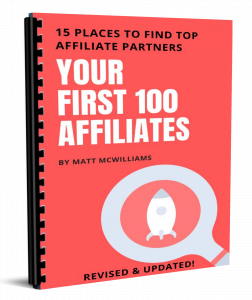 |
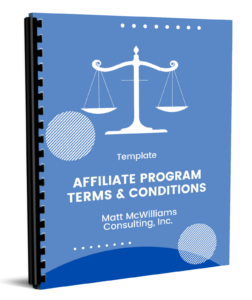 |
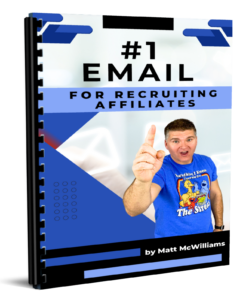 |
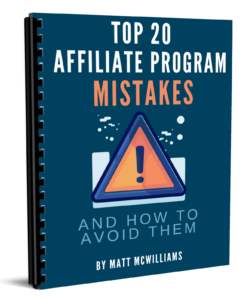 |
 |
 |
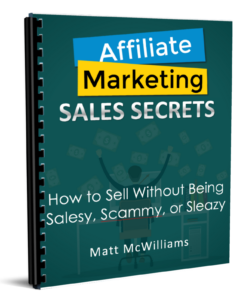 |
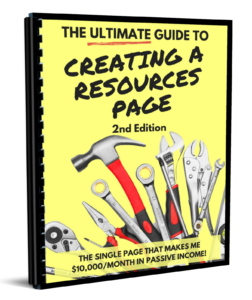 |
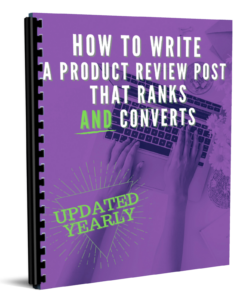 |
